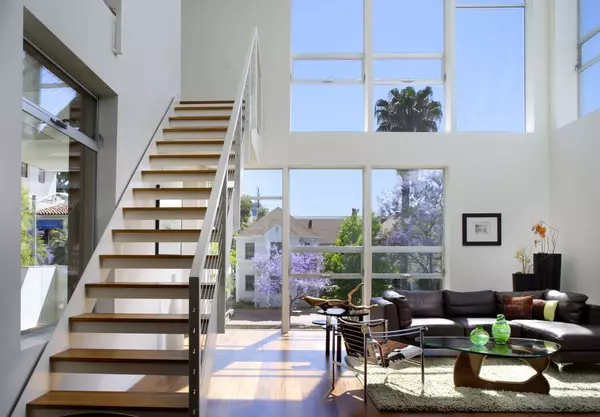After 32 years of family ownership, Point Loma’s commercial fishing marina drifts toward a port takeover
Tom Driscoll’s commercial fishing wharf at the north eastern tip of America’s Cup Harbor in Point Loma is falling apart. The marina’s four, fixed piers — home to as many as 120 fishing boats in their prime — appear to be on the brink of collapse. The business model gave way long ago.
The substandard conditions will remain suspended in time until the Port of San Diego assumes control of the facility at some future date.
The agency is pushing Driscoll out of the marina that has held the family name for 32 years — but also forcing him to stay put for now.
Port commissioners considered and rejected two formal redevelopment proposals from Driscoll, the first in 2017 and the other in 2022. Then, in late 2022, the agency declined to renew Driscoll’s lease, opting instead to move forward with its own takeover and redevelopment plan for what it’s now calling the Shelter Island Commercial Fishing Wharf.
“We decided it was probably in the best interest of the commercial fishermen and the commercial fishing industry if the port were to just operate (the wharf) directly,” said Christian de Manielle, who is the port’s real estate department manager.
The port eventually plans to replace the existing piers with a single set of floating docks. First it must study the environmental impacts of demolishing the piers and constructing the replacement floating docks.
The transition could take two years or more.
For now, Driscoll is tied to the marina where he’s no longer wanted. He must also pay rent on a lease that will remain in hold-over status until the environmental work is done and the piers can be razed (at his expense), which is a requirement of his contract with the port.
“We have come to accept that the port no longer wants us there and are ready to fulfill our obligations as required under the lease,” Driscoll said. “Unfortunately, the port wants us now to remain for an indefinite amount of time for plans to be developed while we continue to assume liability and everything else that goes with managing the wharf.”
The family business
One of three family businesses on San Diego Bay, Driscoll’s Wharf dates to 1992, when Driscoll and his father, the late John Gerald Driscoll III, acquired the 40-year leasehold for the commercial fishing marina at 4918 N. Harbor Drive for $2 million from a bank that had foreclosed on the previous owner.
“We are mariners. My dad was into everything involving the water, including commercial fishing. And so, we took over operations. We spent a lot of time and resources cleaning things up,” Driscoll said. “Unfortunately, the bank wanted more than it was worth. We could only invest what the business operations generated in revenue. So, that’s what we did. It was just enough.”
The marina is just one of two dedicated — meaning protected and regulated — commercial fishing facilities in San Diego. The other is Tuna Harbor, which was built in 1977 and is operated by the port.
The Point Loma site covers roughly 2.4 acres of land and 6.6 acres of water. The marina includes a fish offloading dock and four old-fashioned fixed structure piers that pre-date the port’s existence and were likely built in the 1950s. There are also three, two-story commercial buildings that were constructed in the 1980s.

The Driscolls made piecemeal improvements over the years. More substantial upgrades were stopped short by various obstacles.
In 2007, a state agency, California Coastal Conservancy, stepped in with cash and a sweeping analysis of how to revitalize San Diego’s commercial fishing industry.
The industry has been in decline since the 1980s, when tuna canneries such as Bumble Bee Seafoods and Van Kamp moved abroad due to regulations. They took with them the larger tuna fishing fleets.
As it stands, commercial fishing remains a protected use, with dedicated water acreage preserved by the California Coastal Act of 1976. But the two San Diego Bay marinas reserved for commercial fishing don’t bring in enough business to support anything more than day-to-day upkeep.
“The antiquated design, age and deferred maintenance of the fixed piers are contributing to a condition near functional obsolescence,” the Coastal Conservancy wrote in a 2007 staff report, prior to expending grant money on a study to identify improvements at Driscoll’s Wharf and the port’s other commercial fishing facility, Tuna Harbor. “Commercial slip rent control required by the Coastal Commission, land-use restrictions and development configuration limitations have discouraged redevelopment.”
The agency’s ensuing April 2010 report laid the groundwork for more than $20 million in upgrades at Driscoll’s Wharf and up to $8 million in improvements at Tuna Harbor. That plan was approved by port commissioners in January 2011. But the Coastal Conservancy’s grant money evaporated after the completion of phase one improvements, financed jointly by the port, the conservancy and the Driscoll family.
Structural improvements were made to Driscoll’s fish offloading dock. A new ice machine and fish holding tank were installed. But larger projects went adrift.
More recently, the board twice rebuffed Driscoll’s lease and redevelopment proposals, which also floated slip rate increases to finance improvements. The commissioners considered the proposals in closed session in December 2017 and in March 2022.
The agency declined to share specific details of the closed session meetings.
“We, along with the Coastal Conservancy and the port, paid for and completed the first phase of improvements with the anticipation that we would get a new lease,” Driscoll said.
Driscoll’s requests included proposed lease language that mirrored the intent of his original lease, he said, meaning he wanted to be able to charge commercial fisherman half of the going rate for recreational boats.
In the interim, the fishermen have openly grumbled about the facility’s condition.
“I’ve been here for dang near 30 years, and when the Driscolls came in, they really did just suck the money out of this place,” Matt Pressley, a sea urchin fisherman, was quoted saying in a 2013 news article. “They never put a nickel back into it. The buildings are falling apart, we’ve had fires from electrical things. … It should literally be condemned.”

More than a decade later and further deteriorated, the marina still functions.
There are nine commercial fishing boats and a dozen other vessels of varying kind docked at the facility, Driscoll said. One is Driscoll’s boat, another is a houseboat that his son lives on. There are also two sanitation boats (or “pooper pumpers” as Driscoll calls them), an abandoned houseboat and two city of San Diego boats.
Most of the remaining boats have been pushed to piers 5 and 6. Piers 7 and 8 are too dangerous to tie up to.
Driscoll’s offloading dock is, however, in good condition. And in a recent eight-day period of unusual fortune, fishermen offloaded more than 200,000 pounds of squid at the marina.
The two commercial buildings, where wholesale seafood company Chula Seafood and the seafood market Tunaville are based, are also worth keeping around, according to a 2022 conditions assessment report prepared by engineering firm Kleinfelder for the port. However, the commercial building at 4922 N. Harbor Drive, where MTV’s “The Real World: San Diego” was filmed in 2003, is a teardown.
No one is impressed with the place, least of all the fishermen.

“It’s a derelict, (expletive) dump,” said Pete Halmay, who is president of the San Diego Fishermen’s Working Group.
The nonprofit was established in 2010, around the same time that the conservancy was doling out grant money, and aims to protect commercial fishing interests.
The working group aligned with developer 1HWY1, after a bumpy start to the relationship, on the Seaport San Diego project. The Seaport project calls for the port’s other commercial fishing marina, Tuna Harbor, to get new floating docks with room for 96 fishing boats, up to 120-feet in length, as well as a commercial fishing operations building.
It hasn’t been decided whether the port or the developer, or even some entity that includes the fishermen, will operate Tuna Harbor after the redevelopment is completed, said Yehudi Gaffen, who runs 1HWY1.
There’s no alignment across the bay, where Driscoll says there has been friction with a small faction of fishermen since the day his dad started running the place and implemented rules.
“Some of these fishermen just don’t like rules,” Driscoll said, noting that he has a good relationship with other commercial fishermen, including the handful that pay substantially more to dock their boats at his recreational marina in Mission Bay.
Halmay characterizes circumstances differently.
“Tom had 20 years to fix this place, OK. And he didn’t do it. He didn’t put any money into it. And I agree that there was no money to put into,” Halmay said. “Tom is out. … We’re more comfortable with (the port operating the wharf) than having a guy that buys it for profit, because we don’t think there should be profit in there.”
The sad state of affairs is a confluence of competing forces — and personalities.
The fishermen, with Halmay as their spokesperson, have aggressively and successfully pushed to preserve every inch of the marina for themselves as they look toward the future.
“We’re working very hard to bring the fisheries back and while we bring them back, if you don’t have a place to offload, you don’t have a place to tie up, you don’t have a fishery,” Halmay said. “You gotta have these places.”
Driscoll’s lease allows him to rent to recreational or alternative vessels, as long as space is available and the recreational boats are kicked out if commercial fishing ships need the slips. The secondary use accommodation allows Driscoll to collect market rates for some of his slips.
That changes with the Port Master Plan Update, Michael LaFleur, the port’s vice president of maritime, said. The tighter restrictions in the new plan are linked in part to discussions with the fishermen’s group, he said.
‘It doesn’t pencil’
The port, Driscoll and commercial fishermen tell different versions of the same story: The marina with one foot in the watery grave was suffocated to death by a lack of investment.
What’s more, commercial fishing facilities seem to be only viable if they are propped up by subsidies.
Government entities have regulated themselves into a financial jam. They must not only maintain the acreage currently dedicated to commercial fishing but also keep intact discounted slip rates for commercial fishermen working on slim margins. And the agencies will hear from the fishermen if they drift off course.
The port acknowledges this reality.
“Commercial fishing is a tough use to try and operate on tidelands,” de Manielle, the port real estate manager, said. “There are a lot of regulations that are put on this particular use, such as how much the berthing rates can be charged to the commercial fishermen, and then also the amount of secondary uses that can be operated at the facility. … And the Port Master Plan was written in a way to obviously give commercial fishermen the best opportunity for them to thrive and protect their use, which makes it challenging for a private operator to operate under under those (restrictions).”
LaFleur, the maritime executive, put it more simply.
“When I look at it from a business standpoint, it doesn’t pencil,” he said.

The port spends around $300,000 to $500,000 per year on basic upkeep, utilities and security at Tuna Harbor, where there are, on average, 65 to 75 commercial fishing vessels renting slips, LaFleur said. The agency collects between $150,000 and $200,000 per year in revenue, he said.
The Port of San Diego charges $3.15 per month per lineal foot of berthing for commercial fishing boats at Tuna Harbor.
The slip fee, defined in the agency’s tariff policy for maritime fees, compares to a market rate of $22 to $25 per month per foot at a well-kept recreational marina, de Manielle said.
Driscoll said he charges $2.99 per month per foot. He is not tethered to the port’s tariff, but he is restricted by the narrow language in his lease. The lease set a maximum rate for year one and allows for nominal annual increases linked to the consumer price index. In 1994, the marina charged $2.37 per foot, the port said through a spokesperson.
Coastal Commission staff have resisted past proposals or discussions regarding slip rate increases that go beyond what Driscoll’s lease stipulates, the port spokesperson said.
The takeover
Looking ahead, the port will use $3.1 million in previously allocated money to conduct its environmental analysis and install one set of floating docks at the Point Loma commercial fishing marina. The docks will provide enough space for 23 boats.
A best-case scenario will see the current piers demolished in early 2026, after the environmental analysis is complete. The port then plans to construct the initial set of floating docks in mid- to late-2026, according to a staff presentation for last month’s Board of Port Commissioners meeting.
Driscoll, ready to move on, wants to demolish the piers without waiting for the environmental work. The port, he said, is adamant that he must stick around. And, at least for now, that seems to be where things have settled.
The port’s longer term redevelopment plan envisions adding two more floating docks for a total of 75 slips. That will require an additional $8.7 million to $11 million in nonexistent funding, and the timeline is far less certain.
“The path to full redevelopment faces challenges, particularly in terms of feasibility and funding,” de Manielle told commissioners last month.
The staff report also noted that the projected revenue from the commercial fishing facility will not offset the project cost or the operating expenses of the full redevelopment plan.

Meanwhile, Tuna Harbor is slated for its own makeover courtesy of the aforementioned Seaport San Diego project.
The project has since 2016 been working its way through the entitlement process — all while Driscoll fought and failed to secure a new lease for his facility.
The Tuna Harbor improvements would likely be financed with some of the $550 million in public funds that the developer plans to seek to pay for project infrastructure and amenities.
The sequence of events suggests that 1HWY1 or the port may be considering a future in which the Point Loma facility and Tuna Harbor are tied together. The topic of consolidation has been broached before. The agency confirmed that the development team has approached port staff in the past about running Driscoll’s Wharf. There are no active conversations on the topic, a port spokesperson said.
The Seaport San Diego project has no connection to Driscoll’s, Gaffen, the 1HWY1 executive said. But he has followed with interest the port’s planned takeover of the marina.
“Our commitment, my personal commitment, to revitalizing our local commercial fishing is very much part and parcel of everything we think about at Seaport,” Gaffen said. “One of the things that we have spoken to the commercial fishermen about is, is there the opportunity to link the two (commercial fishing wharfs) and to have the two be managed together? Because it would make sense.”
Categories
Recent Posts










GET MORE INFORMATION
Agent | License ID: 02118739

